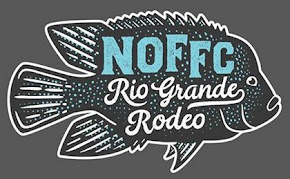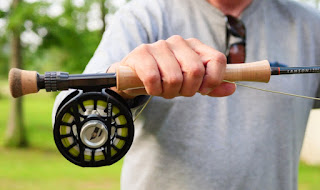Today marks an anniversary of sorts. On this day 30 years ago, I passed the examination for the Fly Fishers International (FFI) Certified Casting Instructor (CCI) program at the FFI Southeastern Council conclave in Haines City, Florida.
The program was still in it's first full year, but had been well advertised. As such, many folks tried and many failed the exam. But I passed with flying colors as they say. My examiner was the legendary Chico Fernandez, a great caster, author, outdoor writer, fly tier, and who once held several world records including largest redfish on fly rod. What impressed Chico most about my field testing portion of the exam was that I did it using a 4-weight rod. Ask any flyfisher to execute an 80-foot cast, or a 40-foot roll cast, or aeralize 60 feet of line, routinely using a 4-weight. With today's high-tech rods, probably not so difficult. With the rods back then... pretty tough! I'll share that my secret was using a premium double-taper fly line.
My motive to become an FFI CCI was a bit misguided. It began in 1988. Our club in Baton Rouge - Red Stick Fly Fishers - was only months old. We had decided to relocate to St. Luke's Episcopal School where there was this big green lawn for casting. Shortly after the move, the club held its first "Distance Casting Contest". The winner threw for 82 feet, most of the members threw in the 60s and 70s. My best of three casts was a measly 48 feet. It wasn't last place, but it was in the bottom five - out of fifty!
Anyone who knows my competitive nature knows this was cause enough to get me going. But shortly after, a second incident occured that added fuel to the motivation. My buddy Dugan Sabins and I were out marsh fishing near Cocodrie. We came upon an island where small redfish were stacked on the shallow side - a couple dozen in the 16" to 18" size. Still great fun on fly rod! The closest we could get without grounding was 50 feet. Every cast I made with my fly rod was short. Meanwhile, Dugan - using spinning tackle - was hooking fish after fish.
The club had a pair of casting clinics the next two years with Dave Johnson and David Diaz, two of the best technical casting instructors I've ever known. I absorbed everything they said like a sponge! I also attended events at other clubs where there were casting demonstrations, and in 1991, my first FFI regional conclave where I took a casting class with my longtime mentor and soon after friend, Gary Borger. In 1992, I began scheduling my training trips to Atlanta and Philadelphia in conjunction with the same weeks prior to the large commercial fly fishing shows. There I took classes with the likes of Joe Humphries, Lefty Kreh and Ed Jaworoski. Also in 1992, I attended my first FFI National Conclave and took a casting workshop there.
On top of the in-person clinics and workshops, my VHS player probably overheated a few times with me watching casting videos by Mel Krieger, Doug Swisher, Gary Borger, Joan Wulff and others. I'd come home from work and head to the elementary school grounds just a block from the house and practice, practice, practice. By Spring 1993, I had become proficient at the following: roll cast, standard cast (pick up and lay down), wind cast, Belgian cast, elliptical cast, curve cast, reach mend cast, parachute cast, double haul, over-shoulder cast and more, as well as able to demonstrate "bad" casts: tailing loops (wind knot), open loops, drifting, and more.
So when I learned about this new CCI program, I took it as a personal challenge. I passed the exam and met my goal of being an excellent flycaster. And in addition, my fishing success greatly improved (Cormier's 2nd Law of Flyfishing: "
Casting proficiency leads to fishing success").
But personal success is not what the FFI Certification program was intended for. It was so those wanting to learn about our sport would be given a professional and enhanced level of instruction by CCIs. While I had given a few casting coaching lessons to other club members, I'd never taught a class prior to earning my CCI badge. It didn't take long before I was given that challenge.
I was asked to teach a group of six students. I started with the basics of our sport: tackle, flies, terminology. Then I got into the casting part including hands-on instruction. Halfway into the session, my mind became euphoric... this experience was almost as much fun and gratifying as catching a tarpon, large trout, bull red, or big bass on fly rod. Like I said - almost! The experience led me to draft Cormier's 6th Law of Fly Fishing:
"Teaching others is as rewarding as catching fish".
Since 1993, I've probably taught close to a thousand folks - many of them youngsters - how to fly cast. All my kids are excellent flycasters themselves, but I can't take credit there. That lesson is one that I learned the hard way... don't ever teach your own kids. Thankfully once they learned the basics from others, then they were willing to listen to dad's advise.



































